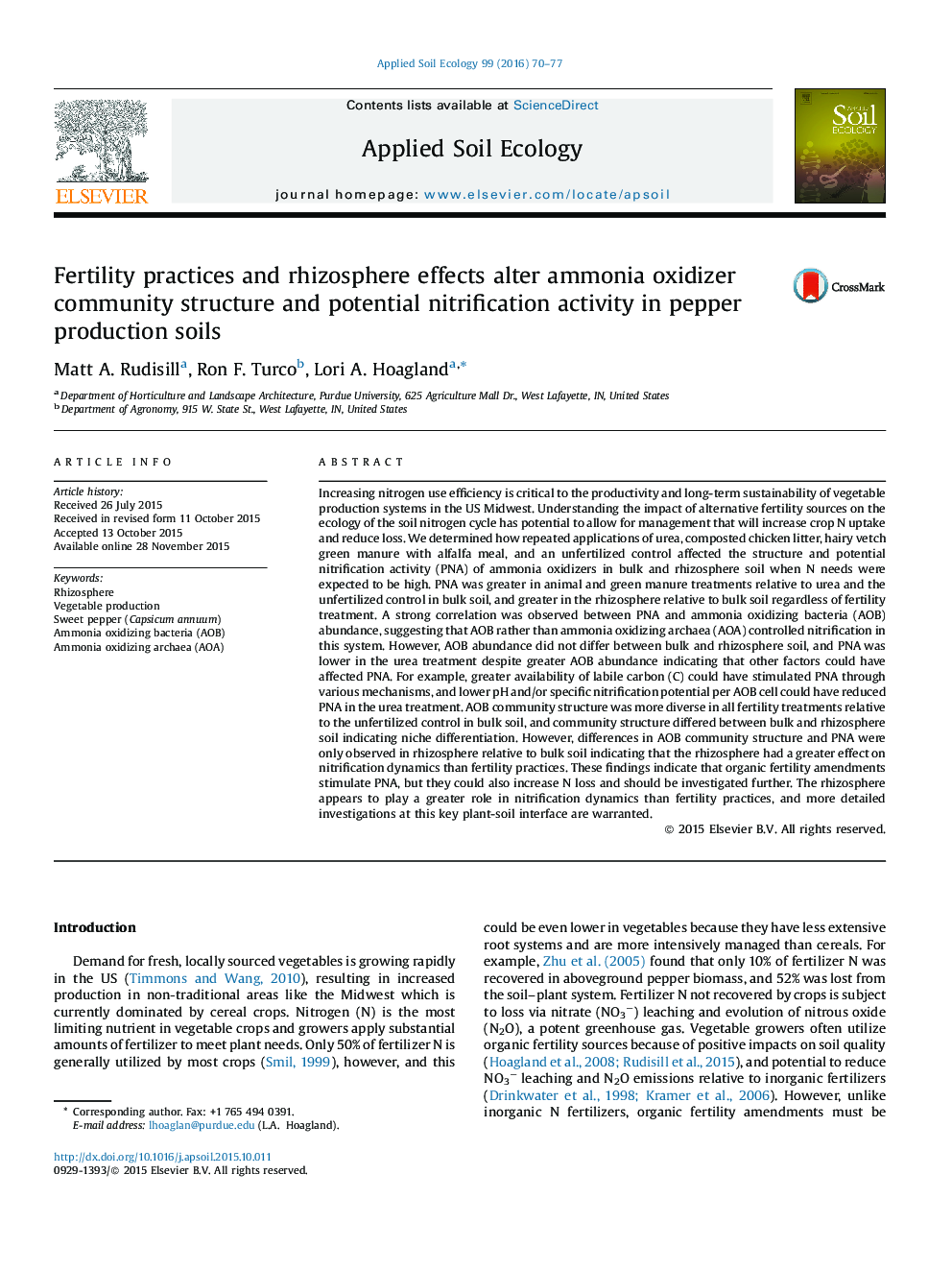| کد مقاله | کد نشریه | سال انتشار | مقاله انگلیسی | نسخه تمام متن |
|---|---|---|---|---|
| 4381840 | 1617784 | 2016 | 8 صفحه PDF | دانلود رایگان |
• PNA was greater with organic fertilizer relative to urea and unfertilized control.
• AOB rather than AOA more likely controlled nitrification dynamics.
• AOB abundance did not appear to be directly related to PNA.
• AOB community structure was more diverse in fertilized treatments.
• PNA and AOB diversity was greater in the rhizosphere relative to bulk soil.
Increasing nitrogen use efficiency is critical to the productivity and long-term sustainability of vegetable production systems in the US Midwest. Understanding the impact of alternative fertility sources on the ecology of the soil nitrogen cycle has potential to allow for management that will increase crop N uptake and reduce loss. We determined how repeated applications of urea, composted chicken litter, hairy vetch green manure with alfalfa meal, and an unfertilized control affected the structure and potential nitrification activity (PNA) of ammonia oxidizers in bulk and rhizosphere soil when N needs were expected to be high. PNA was greater in animal and green manure treatments relative to urea and the unfertilized control in bulk soil, and greater in the rhizosphere relative to bulk soil regardless of fertility treatment. A strong correlation was observed between PNA and ammonia oxidizing bacteria (AOB) abundance, suggesting that AOB rather than ammonia oxidizing archaea (AOA) controlled nitrification in this system. However, AOB abundance did not differ between bulk and rhizosphere soil, and PNA was lower in the urea treatment despite greater AOB abundance indicating that other factors could have affected PNA. For example, greater availability of labile carbon (C) could have stimulated PNA through various mechanisms, and lower pH and/or specific nitrification potential per AOB cell could have reduced PNA in the urea treatment. AOB community structure was more diverse in all fertility treatments relative to the unfertilized control in bulk soil, and community structure differed between bulk and rhizosphere soil indicating niche differentiation. However, differences in AOB community structure and PNA were only observed in rhizosphere relative to bulk soil indicating that the rhizosphere had a greater effect on nitrification dynamics than fertility practices. These findings indicate that organic fertility amendments stimulate PNA, but they could also increase N loss and should be investigated further. The rhizosphere appears to play a greater role in nitrification dynamics than fertility practices, and more detailed investigations at this key plant-soil interface are warranted.
Journal: Applied Soil Ecology - Volume 99, March 2016, Pages 70–77
